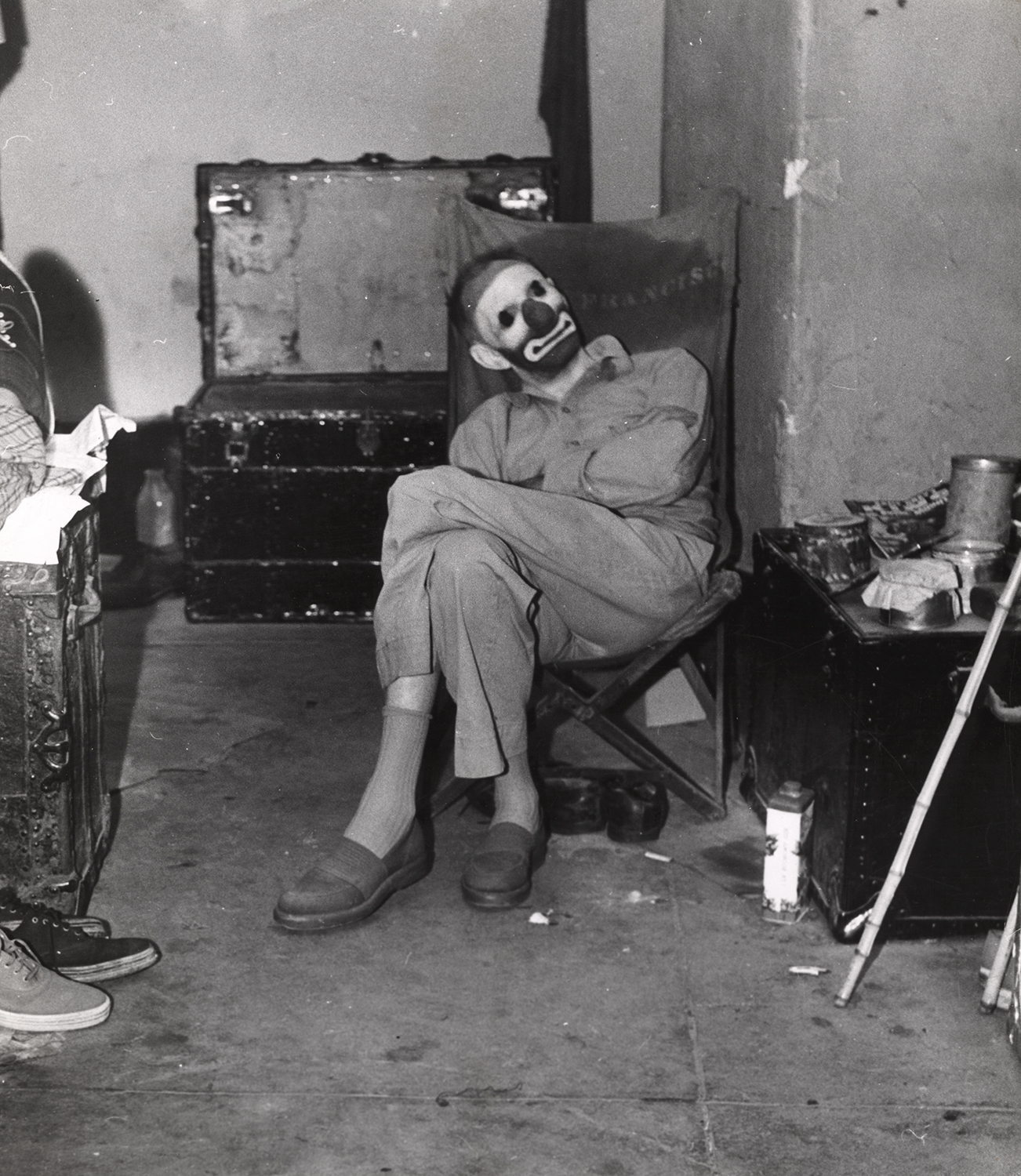Weegee
Weegee, Arthur Fellig actually born as Asher Fellig ( born June 12, 1899 in Zloczow in Lemberg, Galicia, † December 26, 1968 in New York, USA) was an American photographer.
Life
When the family Fellig in 1910 immigrated to the U.S. and settled in New York's East Side, the name of the son of Asher and (Anglicized ) Usher was changed to Arthur. To support his family, Arthur Fellig left the local public school at age 14 and worked first as a candy salesman, then as a street photographer and assistant to a store. At 18, he moved out of his parents' house and got by with odd jobs. He stayed in stations and homeless shelters until he finally found a job as a passport photo photographer. Mid-1920s, he began as a photo lab technician and temporary reporter at the photo agency Acme News Pictures, which later became in United Press International. In 1935, he left Acme and tried to from now on as a freelance press photographer. He specialized in images is usually nocturnal traffic accidents, fire disasters and violence. Equipped with police radio, he was often even before the emergency services arrived on the scene. The recordings from his 4 × 5 "camera were regularly published in all the major tabloids. From 1938 he was the first press photographer who was officially equipped with police radio. During this 10-year career, he had his office practically in Manhattan Police Headquarters. Towards the end of this violent era, he had exclusive contracts with the magazines PN and Vogue.
First, Weegee had arisen as a nickname because Fellig was, at that time considered because of the exceptional approach, under which he created his photos of millions of newspaper readers in New York as a " magician ". Here you compared him with the fascination of a " magic board " prestigious Ouija, which was also very much in vogue in those years in great circles of the U.S. population. The two words of the term, which refers to the French " oui " (it means "yes") had formed and the German "yes" were slang " wee" and pronounced " gee ".
His self-confidence was very pronounced. After WEEGEE accepted as a pseudonym for himself, he soon began to sign his photos with WEEGEE THE FAMOUS ( Weegee the Famous ). His trademarks were photos up close, head-on and hard illuminated with the flash. He became really famous with it but at first only in press circles. This changed with the publication of his book Naked City, where he was his crime and accident with photographs of the poor and homeless and combined in 1947 into a film.
In the captions for his photographs often showed his incomparable deeper meaning. One of his most famous pictures is titled Simply add boiling water - it shows a burning skyscraper, just this advertising slogan emblazoned on which and the attempts to extinguish the fire.
From the mid- forties, he gave up photojournalism and tried as an advertising photographer for various magazines, a consultant for film projects, photo cartoonist and short films. Although he thus did not make the big time, he remained true to these experiments.
At the time of his death he was largely forgotten now include his paintings in the art and photo exhibitions, however, the global standard at least the 1930s and 1940s.










